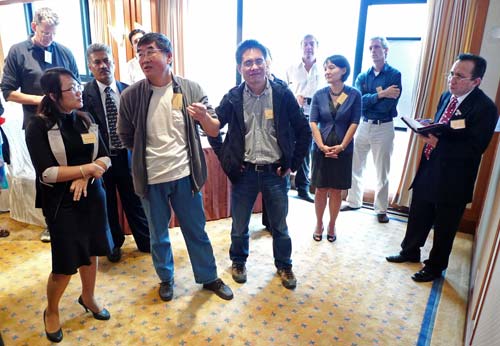Creative experts devise multi-layered strategies to curtail demand for Tigers and other endangered wildlife species
Hong Kong, 25th November 2011—Efforts to reduce the demand for parts and products from endangered species must effectively address the attitudes, motivations and behaviours that drive this demand if they are to be successful. New and innovative approaches must also be developed for the different groups that can influence the consumer demand for Tigers, rhinos and other endangered wildlife species.

These were the conclusions from more than 20 participants from diverse professional backgrounds—including advertising and marketing, social research, behavioural economics, public health and wildlife trade—who met at a workshop in Hong Kong last week. Their task was to develop new strategic approaches to address the complex challenges of increasing effectiveness of messages on demand reduction for consumption of Tigers and other endangered wildlife species in China and Viet Nam.
In the past decade, the economic boom in countries such as China and Viet Nam has fuelled an appetite for the consumption of wildlife products, such as other Asian big cats, elephants, rhinos, pangolins and marine species such as sharks, Humphead Wrasse and marine turtles. This demand has been a main cause for the drastic decline in populations of these species, resulting in, for example, wild Tiger numbers plummeting to only 3,200 in increasingly small pockets of forest, grassland and swamp in 12 countries in Asia and the Russian Far East.
“Efforts in the past to curb this demand have obviously fallen short of dissuading consumers, and the trade continues,” said Steven Broad, Executive Director of TRAFFIC, the wildlife trade monitoring network, which convened the meeting.
“Efforts now really need to focus in on the underlying social motivations that drive people to buy these products—whether it is as a symbol to show off their success or social status, or as a gift to impress their peers or business partners.”
The meeting outlined designs for approaches to address the different motivations of various target groups such as businessmen, high-level government officials, youth and local village communities.
“Clearly, a multi-layered strategy and diverse set of actions is needed to influence some very different motivations and groups of people. Reducing demand for endangered species cannot have a one-size-fits-all solution.”
The results of the meeting will be compiled into a strategic document aimed at supporting national and international efforts at curbing demand for endangered wildlife. This includes the Global Tiger Recovery Programme which was launched by the World Bank-led Global Tiger Initiative in a Summit of heads of state of Tiger range Countries in St Petersburg exactly 12 months ago.
Notes:
1. Participants to the "Creative experts’ meeting on demand reduction messaging for consumption of tigers and other endangered wildlife species" held in Hong Kong from 22-23 November 2011 included, the World Bank, Bloom Association, Ogilvy and Mather, Tribal DDB, the Global Tiger Forum, Wilkes University, The Guardian, Social Science Research Council Vietnam (SSRC) and the Biodiversity Conservation Agency of the Ministry of Environment, Vietnam, Environmental Investigation Agency (EIA), International Fund for Animal Welfare (IFAW), Education for Nature Vietnam (ENV), TRAFFIC and WWF.
2. The meeting was made possible with funding from the WWF Tigers Alive Initiative.




